Buy or Sell? Updating the Levels for the Big Four US Stock Market Indexes
Believe it or not, the big four US Stock Market Indexes – S&P 500, Dow Jones, NASDAQ, and the Russell 2000 – are painting different pictures of the current sell-off and test of support.
What’s the message of each market index and where might we be going from here?
Let’s take a look and plan our pathways, starting with the S&P 500:
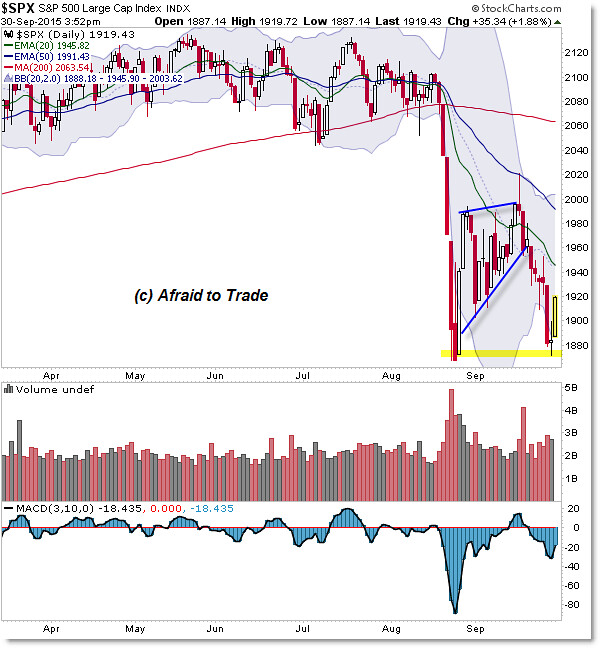
For background and additional video analysis, check out my prior video updates:
“Stock Market Retracement or Reversal? Comparing 2010 and 2011 to 2015” (so far so good)
“The RSI Indicator and Stock Market Reversals” (more educational than predictive but helpful)
After a stellar collapse in August, price retraced as expected and consolidated for a month, stalling into the 2,000 index target with a big reversal candle.
From there, price continued the sell-swing to complete the “Retest of the Low” Thesis which was correct.
Another big reversal candle – a Doji with Positive Divergences off 1,880 – set the stage for another rally higher which we’re seeing today.
We’re targeting first the underside of the falling 20 day EMA into 1,945 for an initial retracement target, and then back toward 2,000 if buyers can push the market up in a reversal scenario.
Otherwise, 1,880 and 1,870 in the S&P 500 is our support-bounce bull/bear pivot.
Here’s the Dow Jones Industrial Average which has a surprising turn:
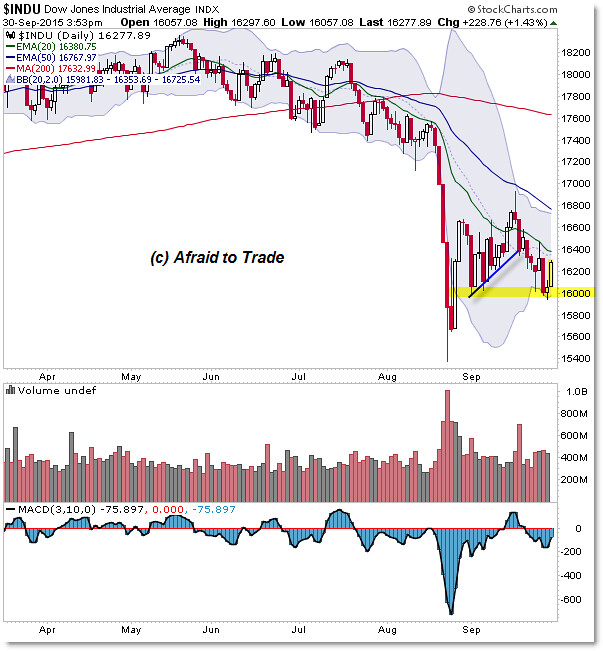
The analysis is similar to the S&P 500 with one exception.
Unlike the S&P 500 which retested (traded into) its prior low, the Dow Jones held above its late-August reversal low and instead found a pivot reversal off the Round Number Support Line of 16,000.
That’s our short-term bull/bear pivot as we see the market already trading into its first retracement target: The underside of the falling 20 day EMA near 16,400.
Like the S&P 500, if above 16,400, we’ll look for a bullish short-squeeze rally toward 16,800 (falling 50 EMA).
Here’s the Tech-Heavy NASDAQ:
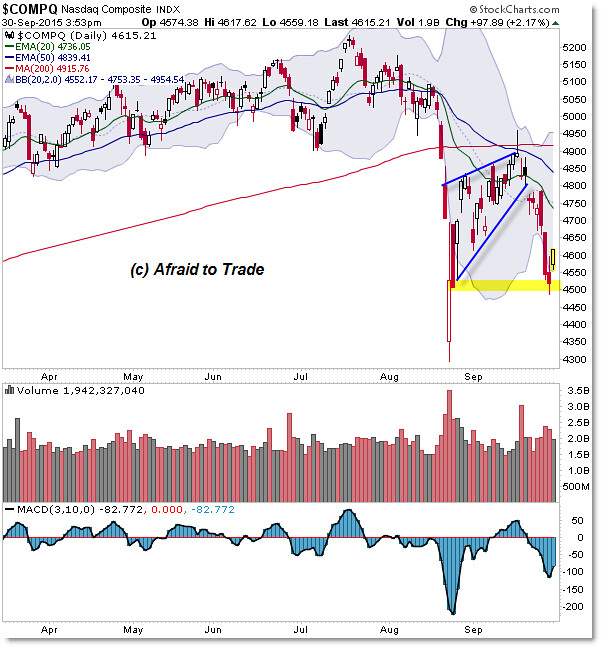
The Monday during the three-day crash in August saw a mini-“Flash Crash” event on the open.
The NASDAQ instantly hit 4,300 and propelled itself 200 points higher off this level.
The next day’s closing low near 4,500 set the stage for the current failure into 4,900 and retest of 4,500.
We’re focusing on 4,500 as the Bull/Bear Pivot Point with a possible rally targeting 4,750 if buyers do continue their campaign here.
In this sense, the NASDAQ can be compared to the S&P 500 – not like the Dow.
Finally, the Small-Cap heavy Russell 2000 was the weakest on the current sell-swing lower:
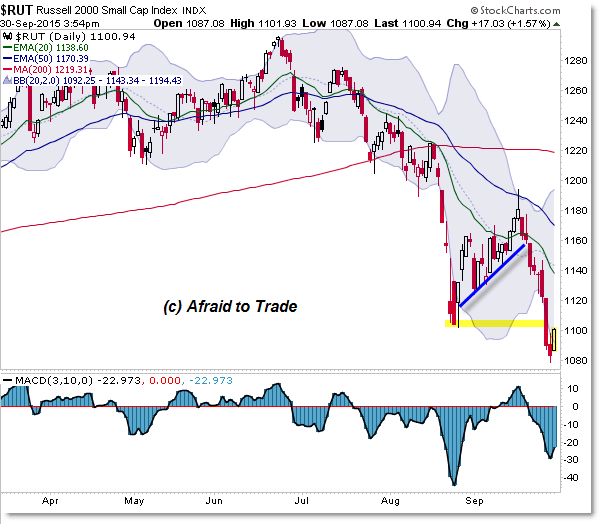
Unlike all three other US Stock Market Indexes, the Russell 2000 broke its 1,100 level – the August Spike Reversal Low – and traded 20 points lower.
The index reversed yesterday off 1,080 after creating a new swing low for 2015.
The Russell thus has higher to travel to the upside toward its falling 20 day EMA near 1,140 and our pivot points for support will include 1,100 (simple Round Number) and of course 1,080 which is yesterday’s spike low.
Focus on these levels: The Prior Low from August, the Falling 20 day EMA, and plan your trades on movement toward or away from these key index evels.
Follow along with members of the Afraid to Trade Premium Membership for real-time updates and additional trade planning.
Corey Rosenbloom, CMT
Afraid to Trade.com
Follow Corey on Twitter: http://twitter.com/afraidtotrade
Corey’s book The Complete Trading Course (Wiley Finance) is now available along with the newly released Profiting from the Life Cycle of a Stock Trend presentation (also from Wiley).

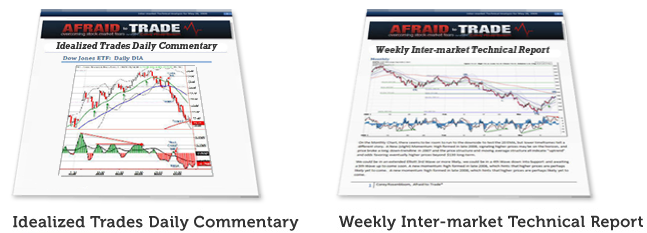
I think it might be good to buy because the movement looks to be heading back upside, I am always doing long term trading with OctaFX broker where they have excellent swap free account that really helps me work well since I am never required to pay any charges on overnight trades and that is seriously helpful to allow me to trade easily in all situations which is why I am so successful so far and always believe in making profits that way.